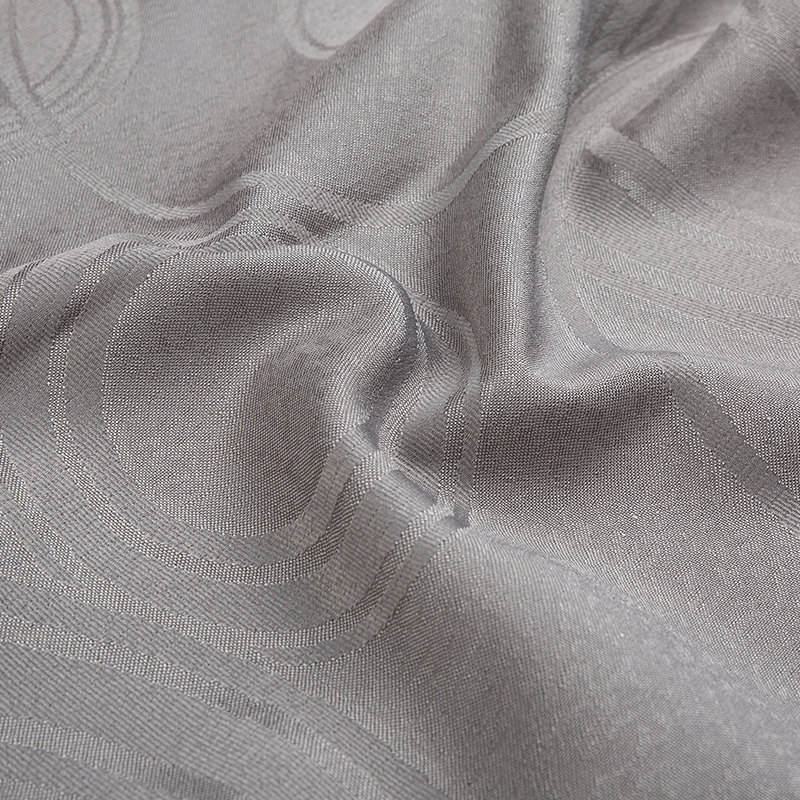Premium quality since 2002!
Jacquard fabric is a type of textile known for its intricately woven patterns, rather than patterns that are printed or embroidered onto the surface. The distinguishing characteristic of jacquard lies in its method of production, utilizing a Jacquard loom (or Jacquard mechanism), which allows for the individual control of warps (the lengthwise threads) during the weaving process. This sophisticated control enables the creation of highly complex and detailed designs, making it a truly unique and versatile material in the world of textiles.
The Innovation Behind the Weave
Before the invention of the Jacquard loom by Joseph Marie Jacquard in the early 19th century, creating patterned fabrics was an incredibly labor-intensive and time-consuming process. Weavers had to manually lift and lower individual warp threads according to a design, which severely limited the complexity and scale of patterns.
The Jacquard loom revolutionized this process by using a series of punched cards (the precursor to modern computer programming) to control the lifting mechanism for each warp thread. Each hole (or absence of a hole) on a card corresponded to whether a specific warp thread would be raised or lowered. This automated system allowed for the creation of elaborate, repeatable patterns with unprecedented efficiency and precision.
Key Characteristics of Jacquard Fabric
Jacquard fabrics are easily identifiable by several key features:
-
Intricate Patterns: This is the most defining characteristic. The designs are woven directly into the fabric, appearing as an integral part of its structure rather than an applied decoration. These patterns can range from simple geometric shapes to highly detailed floral motifs, damasks, brocades, and even pictorial scenes.
-
Textured Surface: Due to the varying interlacements of warp and weft threads to create the patterns, jacquard fabrics often have a distinct texture. Areas of the pattern might be raised or have a different sheen compared to the background, adding to their visual and tactile appeal.
-
Durability and Stability: The complex weave structure generally makes jacquard fabrics quite durable and stable. The interwoven threads create a strong and resilient material that holds its shape well.
-
Versatility in Fiber Content: Jacquard can be woven from virtually any fiber, including silk, cotton, wool, linen, polyester, and blends. The choice of fiber will influence the fabric's drape, hand (feel), and specific end-use. For instance, a silk jacquard will have a luxurious sheen and soft drape, while a cotton jacquard might be more breathable and casual.
-
Damask: A reversible fabric with a pattern woven into it, often featuring floral, fruit, or animal motifs. The pattern is usually created by a satin weave against a plain, twill, or sateen ground, making it appear lustrous.
-
Brocade: A richly decorative shuttle-woven fabric, typically made in colored silks and with or without gold and silver threads. It's characterized by raised patterns that appear as if embroidered, though they are actually woven into the fabric. Brocades are not reversible.
-
Matelassé: A double-weave fabric that looks quilted or padded due to its raised, puckered surface. It's often used for upholstery, bedspreads, and sometimes apparel, offering a three-dimensional effect.
-
Tapestry: While often associated with hand-woven wall hangings, "tapestry fabric" can also refer to machine-woven jacquard textiles designed to emulate the look of traditional tapestries, often featuring pictorial or large-scale patterns.
-
Jacquard Brocade: This term specifically highlights that a brocade is created using the jacquard loom, emphasizing its intricate woven nature.

Applications of Jacquard Fabric
The beauty and versatility of jacquard textile make it a popular choice for a wide range of applications:
-
Apparel: From elegant evening gowns and sophisticated suits to intricate ties and luxurious scarves, jacquard adds a touch of refinement to clothing.
-
Home Furnishings: It's widely used for upholstery, drapery, bedspreads, decorative pillows, and table linens, adding texture and visual interest to interior spaces.
-
Accessories: Bags, shoes, and even some jewelry pieces can feature jacquard elements.
In essence, any fabric with an elaborate woven-in pattern, created through the complex interplay of warp and weft threads under the precise control of a specialized loom, can be referred to as a jacquard weave. Its enduring appeal lies in its ability to combine artistic design with robust construction, offering both beauty and durability.

 English
English 简体中文
简体中文









